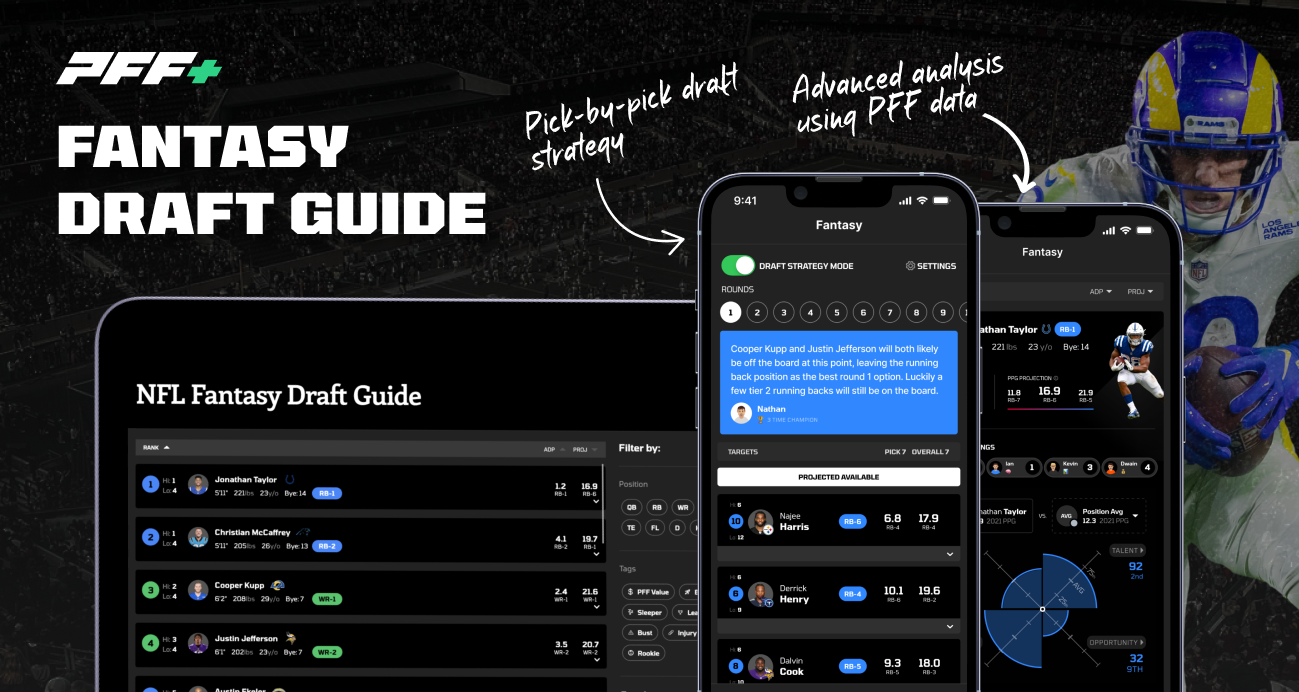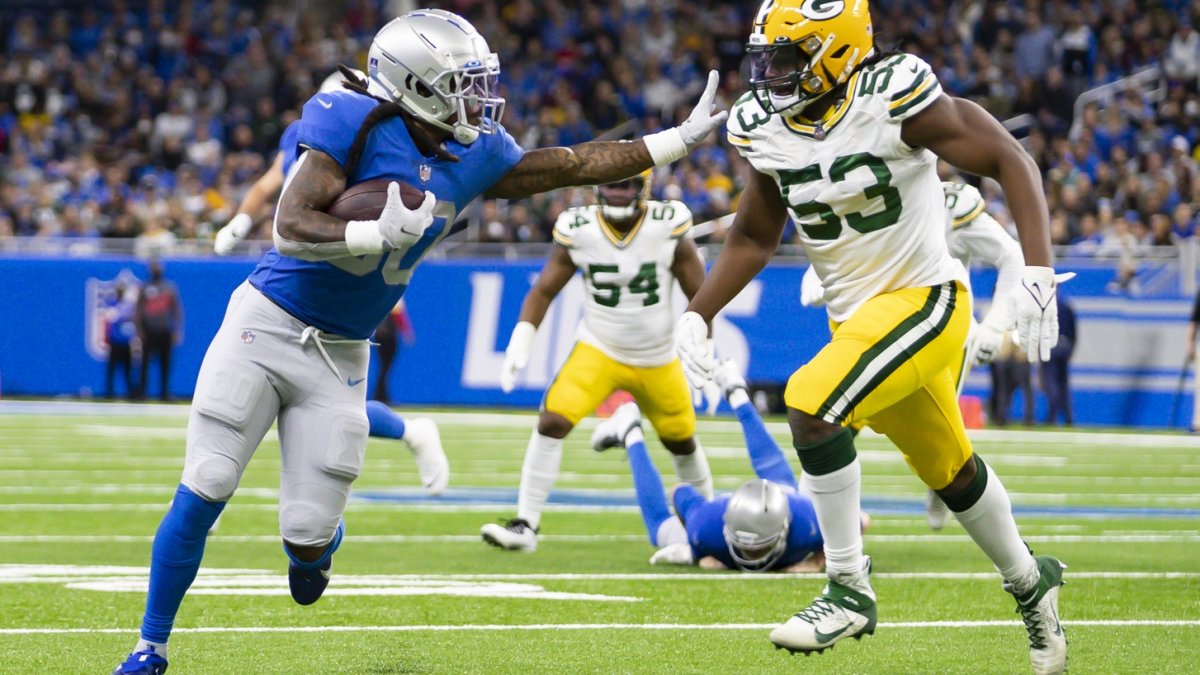• Weighting targets over carries in PFF’s fantasy projections before comparing against average draft position (ADP) can help reveal undervalued running backs.
• Detroit Lions RB Jamaal Williams stands out as the single most-undervalued running back in terms of projected opportunity against ADP.
• Jacksonville Jaguars RB Travis Etienne also looks like a good bet to beat his affordable ADP thanks to his fantasy-friendly receiving role.
The Atlanta Falcons‘ Cordarrelle Patterson, Los Angeles Rams‘ Darrell Henderson, Houston Texans‘ Dameon Pierce and Denver Broncos‘ Melvin Gordon III are also solid bets to outperform their ADPs due to talent and opportunity.
Volume is king in fantasy football land. High-end efficiency can, at times, make up for a lack of overall touches, but just realize it’s physically impossible to rack up fantasy points if a player doesn’t have the ball in his hands.
I want high-end volume, you want high-end volume: Everyone wants high-end volume. Of course, it usually costs a higher-end draft pick in order to acquire anything close to a three-down back, so today’s goal is to try and figure out the Walmart versions of Christian McCaffrey and Jonathan Taylor.
The following running backs have the largest differences in FantasyPros consensus ADP rank compared to their “weighted opportunity rank” using PFF’s fantasy projections. From 2011 to 2020, running backs averaged 1.61 PPR points per target and 0.6 per rush attempt, so “weighted opportunity” calculates an expected PPR point value to properly weight one target as about 2.7 rush attempts.
Obviously, the main limitation of this value is not adjusting to a player’s talent or offensive environment, but again, beggars can’t be choosers when dumpster diving for a hopeful workhorse running back.
The following six running backs boast an ADP inside the position’s top-50 players yet are ranked at least eight spots higher in terms of their weighted opportunity:

RB Jamaal Williams, Detroit Lions: RB36 weighted opportunity rank; RB53 ADP (+15)
Williams didn’t exactly take over the backfield when D’Andre Swift suffered a sprained A/C joint in Week 12, but this seemed, in large part, due to him dealing with a combination of hip and thigh injuries before also dealing with COVID later in the season.
Still, Williams’ per-game usage without Swift was clearly pretty solid from a raw touch perspective:
- Week 12: 15-65-0 rushing, 5-18-0 receiving, 63% snap rate
- Week 13: 17-71-0 rushing, 1-9-0 receiving, 47% snap rate
- Week 16: 19-77-0 rushing, 0-0-0 receiving, 42% snap rate
It’s unlikely that Williams would handle every snap with Swift sidelined, but he’s clearly the next-man-up and would be a viable borderline RB2 as the clear-cut starter.
While the ex-Green Bay Packers veteran shouldn’t be confused as meaningful competition to Swift, he did carry a slight lead in goal-line carries (5 vs. 4) when both were healthy last season. Don’t discount Williams’ potential for a 2021 James Conner-esque campaign if the Lions offense makes a decent-sized leap.
RB Cordarrelle Patterson, Atlanta Falcons: RB20 weighted opportunity rank; RB30 ADP (+10)
This past season was a special year for Patterson, as the arguable GOAT kick returner (not including punts, chill out Bears fans) finally surpassed the 85-touch mark in a single season, posting 153-618-6 rushing and 52-548-5 receiving lines.
And guess what, the nine-year veteran looked good doing it.
Cordarrelle Patterson pic.twitter.com/d8DR6kvNKx
— Ian Hartitz (@Ihartitz) June 7, 2022
Patterson was a fantasy darling during the early portions of 2021, ripping off PPR RB36, RB4, RB19, RB1, RB16, RB19, RB11 and RB7 finishes in his eight games before spraining his ankle against the Dallas Cowboys. His worse per-game splits after the injury were, in large part, induced by a reduced pass-game role, but he noticeably still bested his present ADP as the RB30 in both instances:



 © 2024 PFF - all rights reserved.
© 2024 PFF - all rights reserved.